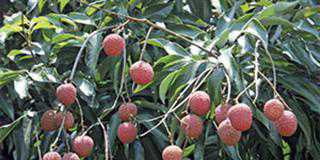Nguni cattle, indigenous to Southern Africa, are the subject of fascinating collaborative research by South African scientists and a geneticist from the US Department of Agriculture.
Dr Mike MacNeil, from the Agricultural Research Service in Montana, and his South African counterparts have two goals. The first is to provide South African scientists with better research tools to boost food security and the economic prospects of emerging beef producers. The second is to conduct research that will improve cattle breeds in South Africa as well as globally.
Dr MacNeil first started corresponding with Dr Michiel Scholtz, a scientist and cattle researcher at the Agricultural Research Council at Irene, in 2004. They established an informal exchange programme which led to Dr MacNeil collaborating on research studies with a number of other scientists.
The studies include working with Ephraim Matjuda, ARC’s senior manager: animal breeding and improvement, on his PhD project to breed a beefier Nguni. Dr MacNeil is also working with ARC scientist Olivia Mapholi to transfer the Nguni’s tick resistance to other breeds; and with University of Pretoria senior lecturer Dr Este van Marle-Köster to establish the Nguni’s genetic profile.
Much of the research focuses on the Nguni, which is popular among cattlemen because of its fertility, tolerance to a harsh environment and tick-borne diseases, and cultural value.
Dr MacNeil and Matjuda uncovered a problem that commercial cattlemen were experiencing: Nguni cattle were too small and deposited too much fat before reaching market weight. As a result, farmers struggled to sell their Nguni weaners to commercial feedlots.
“We asked how we could make commercial production more profitable for emerging cattlemen, using the cattle and resources at their disposal,” recalls Dr MacNeil. “Hence our interest in Nguni, but also in the Afrikaner and Bonsmara.”
An obvious “quick fix” for the Nguni’s feedlot shortcomings was to cross Nguni cows with beefier bulls such as Angus and Charolais. “Initially we set out to determine the estimated breeding value (EBV) profiles for bulls of terminal sire breeds that would best meet that objective,” he explains.
“Then we set about building a “tool” to assess the merits of the EBV profiles of Angus and Charolais bulls to maximise profitability when used on Nguni, Afrikaner and Bonsmara cows.” The cross-bred animals would ideally retain the Nguni hardiness and adaptability combined with the beef qualities of the Angus and Charolais.
All of this work was based on systems analysis models with parameters derived from existing data. This simulation model isn’t available to farmers, although farmers can use the published results to guide them in selecting breeding bulls.
Enhancing beef production
Mapholi did research for her Master’s degree under Dr MacNeil in the US in 2004. She continues to consult him as she searches for specific genes – known as quantitative trait loci (QTLs) – in the Nguni genome that pass on its tick resistance.
She is crossing tick-resistant Nguni with tick-susceptible Angus and her research could help reduce cattle mortality from tick-borne diseases worldwide. “The transfer of resistance to ticks from Nguni to Angus, or for that matter desirable carcass characteristics from Angus to Nguni, is not a simple matter,” Dr MacNeil explains.
“The first step – which is currently underway – is to find the exact part or parts of the genome that confer tick resistance in the Nguni. Then we can proceed to breed it into the Angus, or any other tick-susceptible breed.
“What we’d really like to do is keep the desirable genetic characters of one breed and move (introgress) only specific genes into the other breed. This is more or less the same idea as making Simmentalers polled or black, as in the US.” To demonstrate this principle, Dr MacNeil has been working with a set of Hereford cattle to remove their white faces.
While this research may raise concerns that genetically unique lines in the Nguni may be lost to cross-breeding with European cattle, Dr MacNeil is also involved in compiling an extensive database on the Nguni’s genetic framework. He is using his database of microsatellite markers of the bovine genome as reference points.
Working with Dr Van Marle-Köster, the researchers are collecting blood samples from about 600 Nguni cattle throughout South Africa. This will help identify genetically unique lines within the breed, along with useful locally adapted genes and traits.
The samples will provide a window into the herds’ genetic makeup, track relationships within the population, possibly identify the genetic basis for the traits that make Nguni so adaptable, and guide management strategies and future conservation efforts.
Focused on Africa
Dr MacNeil want the ideas for projects to originate with scientists in South Africa. “This will ensure that African priorities are addressed and that the scientists take ownership of the research. Projects are designed with an awareness of the nation’s cultural paradigms, such as the value placed on cattle as symbols of wealth, and not only to help farmers produce cattle at lowest cost and sell them at the highest price.”
Source: The ARS magazine Agricultural Research, October 2011.
Call Dr Michiel Scholtz on 012 672 9111 or email [email protected], or email Dr Mike MacNeil on [email protected].
Caption:
If the Nguni’s tick resistance can be transferred into other cattle, it could reduce mortalities worldwide.
WAYNE SOUTHWOOD












